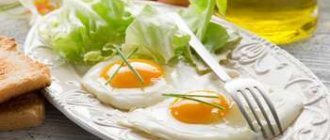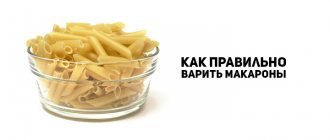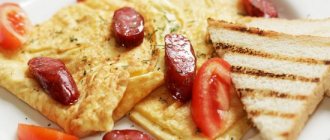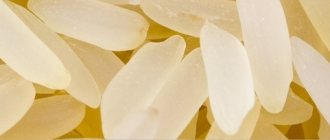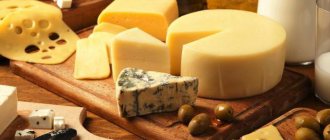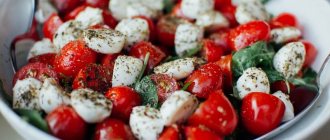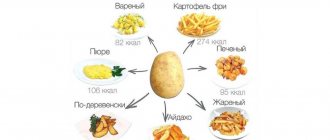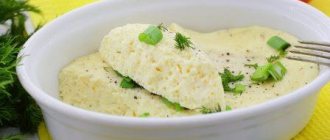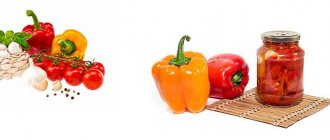The benefits of some products are underestimated, the same applies to butter. The caloric content is high and therefore such oil is considered to be a harmful product, but it was unfairly offended. Nutritionists are increasingly talking about the beneficial properties and advantages that the product has.
CALCULATORS FOR THOSE WHO WANT TO LOSE WEIGHT
Calculation of caloric content of a product per 100 grams
The calculation of the calorie content of 100 grams of product is based on previously known indicators of BZHU (abbreviation: proteins-fats-carbohydrates). The calculation method is the summation of these data (obtained by laboratory analysis and calculations) previously multiplied by a value equal to the energy released (calories) during their splitting. So, for example, 1 gram of protein or carbohydrate can release energy equal to 4.1 kcal, and fat a little more than 9. In calorie calculations, these numbers are usually rounded to whole numbers, as is the result itself.
Our example involves proteins - 0.5 grams, fats - 82.5 grams and carbohydrates - 0.8 grams contained in 100 grams of product. Next we perform the calculation:
Energy value of 100 grams = 0.5 (proteins)*4 + 82.5 (fat)*9 + 0.8 (carbohydrates)*4 = 2 + 742.5 + 3.2 = 747.7 kcal
Our calculated calorie content is more than 250 kcal, which means that butter is 82.5% fat, traditional butter is a high-calorie product with a high fat content and a low level of proteins and carbohydrates.
Benefit
One of the first associations that arise when you mention butter is “fat.” There is no doubt that the content of proper fatty acids per 100 grams is high, but they are necessary for the body to function well. The oil contains useful organic substances and vitamins. The consumption dose ranges from 10 to 30 grams per day, such an amount will not harm a person, will not spoil the figure and will not be deposited with excess fat deposits.
The benefit of butter lies in the presence of cholesterol. Scientists claim that this is a terrible enemy of the body, but do not mention its beneficial and vital properties. Cholesterol is produced by the body, but for the appearance and full functioning of sex hormones, an additional dose of the substance is required. Cell construction is another spectrum of work of the “harmful component”.
The “happiness hormone” serotonin is not produced without the participation of cholesterol, and a person falls into a depressive state, which entails a general loss of strength and irritability.
The main feature of the product is the manufacturing method: churning or separating the cream. To make 1 kg of creamy mass, you will need 25 liters of cow's milk, the type of which affects the future color and taste of the product.
Vitamins contained in oil:
- E;
- ;
- C;
- IN;
- A.
In more detail, the presence of these vitamins in the body in full improves the condition of muscles, bones, skin, hair and nails. Vitamin D is responsible for the formation of bone and nerve tissue. In addition, it protects tooth enamel and helps the absorption of calcium. The healthy appearance of the skin, mucous membranes, and the quality of vision depend on vitamin A. Nails, muscles and hair growth are the privilege of vitamin E.
Arachidonic acid contained in the product increases brain activity.
Butter has a beneficial effect on the body of women suffering from infertility. Reproductive function is normalized, and the possibility of successful conception increases. This product eliminates problems with the stomach and intestines, normalizes microflora.
Vitamin content
Table 1
| Vitamins | Content | Daily norm |
| A (retinol) | 653 mcg | 65.3 % |
| E (α-, β-, γ-tocopherols) | 1 mg | 10 % |
| D (lamisterol) | 1.5 mcg | 60 % |
| B2 (riboflavin) | 0.1 mg | 5.56 % |
| B3 (PP) (nicotinamide) | 0.2 mg | 1.05 % |
| B4 (choline) | 18.8 mg | 3.76 % |
Butter 82.5% fat, traditional, contains vitamins with high, medium and low content levels, if we consider them according to the approved standards for the significance of the nutritional value of the product.
At the highest level of importance in the food value chain are:
- A, takes part in all functions of the body related to its growth and proper metabolism, preserves the structure of the cornea of the eye.
- D, takes part in the formation of bone and dental tissue.
Vitamins at a medium level of importance include:
- E, keeps the muscular system in good shape.
- B2, maintains body tone.
Vitamins of low content include:
- PP, participates in the formation of hemoglobin.
- B4, is involved in the biosynthesis of heme and proteins, cell proliferation, and tissue respiration.
Harm
Calorie content is one of the reasons why a product is considered dangerous and harmful to the body. The amount per 100 grams, including fats, proteins and carbohydrates, is large. However, weight will increase only if you increase the dose of consumption. With proper balanced nutrition, the product will not lead to an increase in bad cholesterol in the body, deposits, because it contains healthy fats.
Content of chemical elements
table 2
| Elements | Content | Daily norm |
| Iron (Fe) | 0.2 mg | 1.43 % |
| Potassium (K) | 15 mg | 0.43 % |
| Calcium (Ca) | 12 mg | 1.2 % |
| Manganese (Mn) | 0 mg | 0.1 % |
| Copper (Cu) | 2.5 mcg | 0.25 % |
| Sodium (Na) | 7 mg | 0.29 % |
| Selenium (Se) | 1 mcg | 1.82 % |
| Phosphorus (P) | 19 mg | 1.9 % |
| Fluorine (F) | 2.8 mcg | 0.07 % |
| Zinc (Zn) | 0.1 mg | 1.25 % |
Low level elements of this product include:
- Fe (iron) is involved in blood formation.
- K (potassium), helps the heart muscle work and removes unnecessary fluid from the body.
- Ca (calcium) is necessary for bone and dental tissues.
- Mn (manganese) is necessary for proper cell development and iron absorption.
- Cu (copper) is involved in the process of hematopoiesis, growth and development of cells and tissues, and the construction of proteins.
- Na (sodium) actively participates in the formation of gastric juice for the digestion process and, together with potassium, maintains the salt composition of the blood unchanged.
- Se (selenium), protects cells from free radicals and damage, slows down the aging process.
- P (phosphorus), required by the skeletal system and teeth.
- F (fluorine), like phosphorus and calcium, is required by the skeletal system and teeth.
- Zn (zinc), takes part in blood formation and tissue respiration.
Butter and its harm
However, it is worth considering that only natural butter is useful, and if you use it in moderation. A small amount of butter made from cow's milk will “delight” the stomach, both in terms of health and pleasure.
Butter contains a fairly large amount of cholesterol, and its excessive consumption can cause atherosclerosis.
Today in the markets, under the guise of butter, we are often sold a spread that contains various additives, emulsifiers, flavors and colorings. Spreads contain fewer calories, but they are not only “useless” for the body, but can also cause harm to it - they contain trans fats, which cause destruction of artery walls.
When purchasing oil, be sure to pay attention to its composition so as not to confuse it with a spread. The fat content of classic natural oil should be at least 80%, while a low fat content indicates that the product is only partly natural.
Dietary properties of butter:
Butter is the main product, the raw material for which is cow's milk. Due to its taste, aroma, and nutritional value, butter can be classified as the most valuable edible fat. This product really has a high energy value, but, in addition, it is also highly digestible.
Butter, whose calorie content, by the way, is very significant, nevertheless, due to its rich composition, structure, and nutritional value, is a very valuable food product - of course, if you do not abuse it.
Once upon a time, butter was considered a very healthy product, and, as it turned out, for good reason. It is a rich source of vitamin A, which is not found in any type of vegetable oil. Only 50 gr. Butter covers a third of the daily requirement of vitamin A, which you and I need for healthy vision and normal functioning of the immune system.
In addition, butter contains a number of vitamins, such as D, K, E, PP, as well as all B vitamins, which are successfully absorbed by our body in the presence of fats. These vitamins are necessary for a person to grow bone tissue, to have healthy teeth, hair and skin, for the proper functioning of the nervous system and reproductive organs. Butter contains approximately 40% monounsaturated oleic acid and another 150 different fatty acids, including 20 essential ones. Natural butter contains proteins and carbohydrates. From its mineral composition we note potassium, calcium, iron, manganese, magnesium, copper, phosphorus, sodium, zinc.
Butter, produced exclusively from cow's milk, has been and remains a food “balm”, consisting of biologically active substances extremely necessary for humans, including phospholipids, essential fatty acids and other substances essential for humans.
In addition, butter contains a number of vitamins, such as D, K, E, PP, as well as all B vitamins, which are successfully absorbed by our body in the presence of fats. These vitamins are necessary for a person to grow bone tissue, to have healthy teeth, hair and skin, for the proper functioning of the nervous system and reproductive organs. Butter contains approximately 40% monounsaturated oleic acid and another 150 different fatty acids, including 20 essential ones. Natural butter contains proteins and carbohydrates. From its mineral composition we note potassium, calcium, iron, manganese, magnesium, copper, phosphorus, sodium, zinc.
Butter is very useful (in moderation, of course) for gastrointestinal diseases. The oil has a complex effect: vitamin A heals small ulcers in the stomach, and, thanks to the “lubrication,” the sick stomach recovers faster. The recommended dose is no more than 15 g per day. The oleic acid contained in the oil helps reduce the risk of cancer.
Fatty foods are an excellent source of energy, so butter is useful for residents of countries with harsh climates, as it helps to keep warm. Fats that make up the cells of the body, in particular those found in brain tissue, actively promote cell renewal. It is imperative to include butter in children's diets, since its lack in food leads to a decrease in mental activity and performance at school.
Types of butter
According to GOST 32261-2013, butter, depending on the characteristics of the manufacturing technology, is divided into:
- sweet creamy;
- sour cream.
Sweet cream – made from fresh cream; ordinary oil produced in Russia. Sour butter – produced from cream fermented with lactic acid starters (to give the butter a specific taste and aroma). To produce these two types, the cream is pasteurized at a temperature of 85-90 °C.
Sweet butter is characterized by a pronounced creamy taste and taste of pasteurization, without foreign tastes and odors. Sweet and sour butter is characterized by a pronounced creamy fermented milk taste, without any foreign tastes or odors.
Sweet butter and sour butter are divided into:
- unsalted;
- salty.
According to GOST 32261-2013, butter is produced in the following assortment:
- Traditional: sweet cream and sour cream, unsalted and salted;
- Amateur: sweet cream and sour cream, unsalted and salted;
- Peasant: sweet cream and sour cream, unsalted and salted.
The main difference between each other, important for oil, is the fat content percentage: 82.5%, 80.0% and 72.5%, respectively. Amateur butter is characterized by a higher water content than other types of butter (20%, 16% in other butters, 1% in melted butter) and some non-fatty substances.
In addition to varieties according to GOST, oil comes in:
- Vologda oil. Made from fresh cream pasteurized at higher temperatures (97-98 °C).
- Oils with fillers. Made from fresh cream with the addition of cocoa, honey, vanillin and sugar, natural fruit and berry juices as flavoring and aromatic substances.
Use in folk medicine
In folk medicine, it is recommended to give butter to teething children. To reduce these unpleasant sensations, it is enough to smear the child’s gums so that he does not feel discomfort for some time.
If you suffer from a dry cough or there is blood when coughing up, traditional medicine recommends consuming it with sugar to alleviate the condition. In addition, the combination of butter and sugar acts as a diuretic, allowing you to remove excess fluid from the body and cleanse it.
If you have some kind of rash on your body, for example, with lichen or urticaria, you need to lubricate the skin with butter to relieve the condition.
If you suffer from diarrhea, consume it with wine. Pomegranate juice and a little butter help with dysentery.
Our ancestors used butter as a cosmetic product. If you melt it and apply it to your skin at night, it will become more tender and elastic, and will also be saturated with useful substances.
To prevent colds, use butter with lemon. To do this, you need to take the juice of half a lemon and 150 g of oil, mix, add salt and herbs and consume one teaspoon every day. Garlic oil has the same effect. For it you need to take 150 g of the product and 10 grams of garlic, mix and also use a teaspoon.
The benefits and harms of butter
Due to its high calorie content, butter is not recommended to be consumed in large quantities. And in small doses it is very beneficial for health. So, its regular presence in the form of sandwiches or as a dressing for cereals or soups on the menu gives you strength and energy and helps renew your cells.
Scientists have concluded that a lack of substances contained in oil in a child can cause mental retardation. Vitamin A is very useful for diseases of the stomach and duodenum
. In addition, thanks to its use, wounds from these diseases heal faster.
But there is also a downside to this product. In particular, it contains large amounts of cholesterol. That is why the daily oil consumption should not exceed 20 grams. With this amount, your cholesterol levels will remain the same and you will not gain excess weight. Those who are on a diet for weight loss also need to control the consumption of this product.
Classification of butter
The milk fats contained in it are very nutritious and healthy. However, the calorie content of this creamy product is quite high. On average, it is about 748 kcal per 100 grams of product
.
It can be salted or unsalted. In the presence of salt, the shelf life of the product is longer, and it can also be of the following varieties:
- first;
- second;
- extra;
- higher.
However, these are not the only classifications of butter. It can also be sweet cream, that is, made from fresh cream (this variety is the most popular). There is also sour cream, which is made from lactic acid starters. Both varieties undergo pasteurization at a temperature of about 90 degrees. There is also a third type - Vologda cream, which is pasteurized at temperatures up to 98 degrees.
can be added to butter during production for taste:
- vanillin;
- cocoa;
- sugar;
- berry and fruit juices.
However, these additives do not particularly affect the calorie content of products.
Use in cooking
It is recommended to use butter for ready-made products, but it is not recommended to use it for frying. On the other hand, if you fry food on it, it produces much less carcinogens than any vegetable fat. If you need to use butter for frying, use melted butter: this type has a much higher smoke point and is also stored for a long time, up to a year.
You can make ghee yourself: you need to carefully heat the butter, preferably in a water bath, until it becomes liquid.
At this temperature it is necessary to maintain it for about 30 minutes. During this time, excess water will evaporate, and milk proteins will float to the top. These milk proteins must be carefully removed from the surface, and the remaining mixture must be carefully strained - this will be ghee.
Thanks to its neutral and delicate taste, butter has gained popularity, including the use of additives. For example, juices from fruits and berries, cocoa and chocolate were often added to it to obtain a chocolate variety, and even honey.
Recipe? Recipe!
What can you prepare from this product at home? A lot of things! Here is one of the recipes:
Butter with sour cream and cheese:
Products:
- Cheese (hard varieties) - 100 gr.
- Sour cream – ½ cup
- Butter - 25 gr.
Pre-grated cheese is combined with sour cream, pounded butter is added. All ingredients are mixed until a thick mass is formed. The finished mixture can be used to make excellent sandwiches and various snacks, as well as for stuffing tomatoes or cucumbers. Just without fanaticism! Since the calorie content of butter in this dish, combined with the calorie content of other products, can significantly spoil your figure.
How to make butter at home?
For example, take 1 liter of thick heavy cream and transfer it to a whipping container. Take a whisk (spoon, fork, etc.) and start beating the contents until a granular mass forms. Then remove the tool and begin to knead it with your hands, then the granular mass will begin to separate into oil and liquid. Drain the liquid and knead the mass further. When a sufficiently dense ball forms, rinse it under running cold, clean water. The butter is ready, salt it or sweeten it, at your discretion, placing it in a pre-prepared tray. Flatten and place in the freezer for several hours.
Butter is incredibly tasty and is a key product derived from cow's milk. However, it also represents a high concentration of milk fat, which is about 80 percent.
Today we will tell you how many calories are in butter, what types it can be divided into and whether it is useful for losing weight.
Is it possible to use oil for weight loss?
Despite the fact that this is a high-calorie product, even when losing weight, you can consume up to 2 teaspoons of oil per day. This will keep you healthy while on a diet that includes low amounts of fat in other foods.
face such problems due to their lack in the body.
, How:
- brittle nails;
- dull hair;
- the appearance of cracks on the lips;
- peeling of the skin.
Therefore, you can afford one sandwich with it a day even with a strict diet for your own good.
What's worse, the high calorie content of butter or the cholesterol in it?
Many people are afraid not so much of the high calorie content of butter as of the presence of cholesterol in it. For some reason, cholesterol in the eyes of the average person is a terribly harmful substance, almost poison. But, in fact, the body needs cholesterol just like vitamins or minerals. It may seem surprising, but our body produces cholesterol itself; approximately 2/3 of cholesterol is of endogenous origin and only one third comes to us through food.
Cholesterol is part of cell membranes, so without it cells cannot divide. In childhood, you cannot do without cholesterol, since it is necessary for the full growth and development of the baby. Cholesterol is necessary for the production of vitamin D, as well as in the production of sex hormones. If a woman completely refuses cholesterol-containing foods, this can lead to cycle disruptions, early menopause, decreased sex drive, and problems with pregnancy and childbearing. In men, a lack of cholesterol also reduces libido.
Of course, excess cholesterol is harmful. At an older age, its quantity must be strictly controlled, but its use cannot be completely abandoned. To avoid the accumulation of excess cholesterol in the blood, you need to eat right and be sure to eat fatty fish, nuts and unrefined vegetable oils, which will help destroy atherosclerotic deposits on the walls of blood vessels. If we try to generalize, the calorie content of butter should not worry children and adolescents, since they need this product. Ask yourself how many calories in butter you need from 20 to 40 years old, and after forty, the amount of butter in the diet must be strictly controlled.
Butter on a diet
Butter is a very high-calorie product, so people with diseases of the cardiovascular system or those suffering from obesity are better off excluding it from their diet altogether. During diets, oil consumption is allowed, but in very limited quantities, only to fortify dietary foods. As a rule, this product is included in the diet programs of athletes, but in minimal doses.
Jul-17-2013
Butter is a unique and versatile food improver for almost any kitchen in the world. Its addition, to one degree or another, radically changes the quality of the product (food) for the better, including appearance, taste, and nutritional value.
Therefore, professional cooks and chefs, as well as skilled housewives, use this opportunity everywhere.
The proverb “you can’t spoil porridge with butter” means exactly this.
Nutritionists believe that butter, due to its visual appeal and characteristic flavor bouquet, is an appetite stimulant.
This is intuitively inherent in the “sandwich principle”, where butter is used as the main component along with other ingredients. The most important component of the oil is the natural dye p-carotene (provitamin A).
As a food product, butter goes harmoniously with almost all foods and dishes without causing any negative side effects. That is why doctors have always used and continue to use it for children, preventive and therapeutic nutrition, in diets for patients, athletes, etc.
Butter, the calorie content of which we are going to consider in our article, can easily be called an underrated product. Unfortunately, even today many of us are confident that it is harmful to health and try to eat it as little as possible. Today we will try to refute this myth.
Another strong opinion about butter is that this product is very high in calories. Therefore, those who want to get rid of excess weight or are simply afraid of gaining new kilograms try to avoid it in every possible way. How fair is this opinion? After all, you shouldn’t forget about the benefits that butter brings. That is why many are interested in questions such as what calorie content butter has and whether this product has at least some dietary properties. Should you completely give up butter if you are losing weight? We will try to answer this and other questions further.
How to select and store
Try to avoid buying butter that is wrapped in parchment. The fact is that in this case the oil is exposed to direct sunlight, as a result of which it oxidizes and loses its beneficial properties. It is better to give preference to one that is sold wrapped in foil.
If you bought oil and it turns out that it has been exposed to sunlight for a long time, and the top layer has become yellow and dull, you can simply cut off this layer and throw it away. The rest is quite usable.
Of course, it is best to store butter in the refrigerator, or at least in a place where the temperature does not exceed 12 degrees. Give preference to dark places, because, as already mentioned, sunlight has a detrimental effect on the product.
It is not recommended to use pure glass for storage; it is better to give preference to ceramics or porcelain. The fact is that oil in glass quickly loses its beneficial properties.
